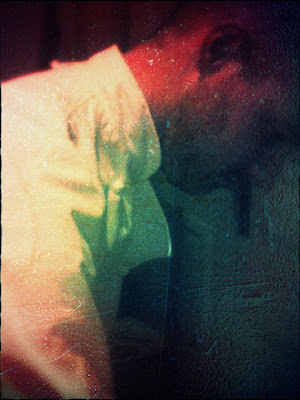We served this for our last event as an amuse bouche, but could easily be an entrée with a nice bitter salad. It's great with caviar, salmon gravalax, quails eggs, peas ......
The panna cotta :
Take 225 gr of cauliflower sliced relatively fine (with no stalk), put in a pot with just barely enough cold water to cover, salt and pepper, 15 to 20 gr of butter and one clove of peeled garlic and put on a high heat. Once the water starts to boil turn the heat right down. Meanwhile soak 2 and a half gelatine sheets in cold water.
By the time the water is almost completely evaporated the cauliflower will be cooked. Now we add enough cream to just barely cover the cauliflower and grate in nutmeg to your tastes; i love nutmeg so i use a third to a half of a 'nut' but prerhaps less if this is an entrée and not an amuse bouche. Reduce the cream by half on a low heat, then place in a blender and while you purée pour in an extra 50 to 75 ml of fresh cream. This has the peculiar effect of making it lighter and certainly a more silky panna cotta like texture.
Rinse and dry your pot then return your purée to a very low heat, squeeze the liquid from your gelatine and drop into the purée, mix thoroughly for a few seconds and remove from the heat.
I like to brush walnut oil into my moulds rather than a spray for de-moulding. I love the marriage of walnut and nutmeg and this is being served with a walnut oil so is also very symbiotic. Once the moulds are lined well with the oil spoon in the panna cotta mix, give them a little while at room temperature to start to cool down then cover without touching the panna cotta itself and put in the fridge. They will be set in about 2 and a half to 3 hours.
The infused oil :
Place a heat proof bowl over a pot of water, the water should idealy be at poaching temperature (62 - 65 degrees) or even slightly cooler for a longer time if you can. Pour in 175 ml of walnut oil and 75 ml of a very good extra virgin olive oil and cover with cling film pricking 6 or 7 holes in the film.
Now we prepare the aromatics. This really can be whatever you like, with our panna cotta i think it is a good idea to balance the richness with some fine grated citrus zest, fresh thyme and rosemary are always good. For our menu I also used toasted cumin seeds and chilli, but I say pick the aromatics that you like best or that you have readily available. Once you have selected you aromatics bruise your herbs a little to release the essential oils then make sure they are all nice and finely chopped (therefore easy to eat), check the temperature of your oil. Body temperature is ideal, so dip in a teaspoon for a few seconds then place it on your lip, if it feels cold: it is too cold, if it feels hot: it is too hot. At or around body temperature add your aromatics and leave at this temperature for as long as possible.
Place your oil in a sealed glass container, don't put the lid on until it is cool, don't store in the fridge or in sunlight, next to your stove etc. I don't like using any preserving methods or ingredients like vinegar or salt for this so the oil needs to be used within four or five days or the aromatics will go off resulting in a unpalatable oil.
To serve........well just put it all on a plate, a nice bull's blood cress or chervil if you like.....
Bon appétit !
LRR
LRR


